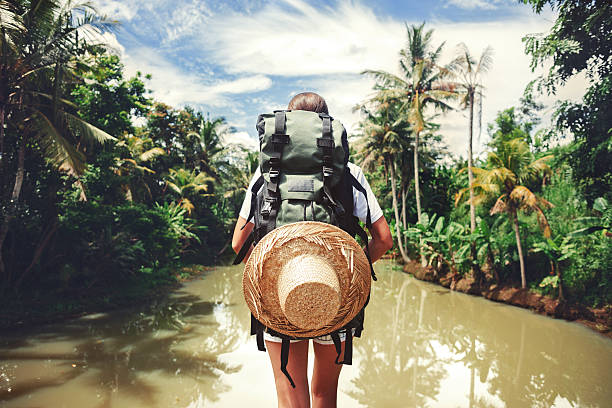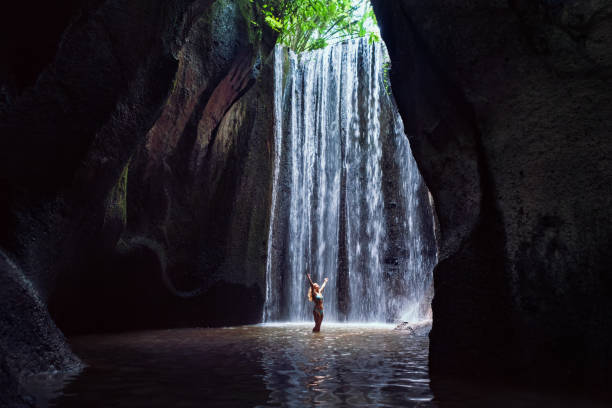For many travelers, the thrill of adventure lies not in the ease of the journey, but in the difficulty of the challenge. Extreme travel is all about pushing your limits, exploring the remote and rugged corners of the world, and experiencing places that few have dared to visit. Whether it’s battling harsh climates, scaling high altitudes, or trekking through inhospitable terrain, the world’s most challenging destinations offer rewards that go beyond just breathtaking views—they offer a sense of accomplishment, raw beauty, and unforgettable memories.
If you’re an intrepid traveler looking to test your physical and mental endurance, then extreme travel might be your next frontier. From isolated islands and desolate deserts to icy polar regions and towering mountain peaks, these destinations are not for the faint of heart. But if you’re prepared, the rewards are truly extraordinary. Here’s a look at some of the world’s most challenging destinations, along with tips on how to conquer them.
1. Antarctica: The Last Great Wilderness
Why It’s Challenging:
Antarctica is one of the most extreme environments on Earth. Located at the southernmost point of the planet, this icy wilderness is home to freezing temperatures, violent winds, and almost no human habitation. Reaching Antarctica requires serious commitment, whether you’re going via a cruise, small expedition ship, or an icebreaker ship. And once there, travelers face harsh conditions with minimal infrastructure. There are no hotels, no restaurants, and no roads—just raw, untamed nature.
What to Expect:
- Temperature Extremes: Even in summer (November to February), temperatures hover around -10°C (14°F), and during winter, it can plunge to -60°C (-76°F).
- Isolation: The closest civilization is thousands of miles away. Expect few amenities and constant proximity to some of the most remote and pristine landscapes on Earth.
- Wildlife: Penguins, seals, and seabirds are the highlights, but it’s not just the creatures that make Antarctica fascinating—it’s the awe-inspiring ice formations, glaciers, and the sheer remoteness.
How to Conquer It:
- Plan well in advance: Travel to Antarctica requires careful planning and permits. Tours are often booked well in advance, especially if you want to travel by boat.
- Go with a reputable expedition company: Many companies offer guided tours that include everything from the icebreaker journey to specialized excursions like polar camping and kayaking.
- Pack accordingly: Prepare for extreme cold with thermal layers, waterproof outerwear, and sturdy boots. You’ll also need proper sun protection—surprisingly, the reflection off the snow can cause sunburns.
2. Mount Everest Base Camp Trek: The Roof of the World
Why It’s Challenging:
Standing at 8,848 meters (29,029 feet), Mount Everest is the tallest mountain on Earth, and reaching its base camp is no small feat. The trek to Everest Base Camp (EBC) requires navigating rugged terrain, unpredictable weather, and extremely high altitudes. The journey is physically demanding, and altitude sickness is a real concern for many trekkers. The trek is no walk in the park, but it is within reach for those who are reasonably fit and determined.
What to Expect:
- High Altitude: The trek begins in Lukla (2,860 meters/9,383 feet), but by the time you reach EBC (5,364 meters/17,598 feet), you will experience significant altitude changes. This can lead to headaches, dizziness, and fatigue, especially for those unaccustomed to high altitudes.
- Trekking Through Sherpa Villages: Along the way, you’ll pass through picturesque Sherpa villages, ancient monasteries, and lush valleys, all surrounded by snow-capped peaks.
- Challenging Terrain: The trail involves steep climbs, rocky paths, and river crossings. It’s not an easy hike, but the stunning views of Everest and surrounding mountains make it worth the effort.
How to Conquer It:
- Acclimatize Slowly: To avoid altitude sickness, ensure you spend enough time acclimatizing at higher altitudes before pushing onward to EBC. Many trekkers take several days to gradually ascend, allowing their bodies to adjust.
- Get Physically Prepared: A moderate level of fitness is required, as the trek involves long days of walking at high altitudes. Prepare by walking long distances and gaining elevation if possible.
- Book with a Guide: While the trek is doable without a guide, hiring an experienced Sherpa guide can help you navigate the trail safely and learn about the local culture and history.
3. The Danakil Depression: The Hottest Place on Earth
Why It’s Challenging:
Located in northeastern Ethiopia, the Danakil Depression is one of the most inhospitable places on the planet. With temperatures regularly exceeding 50°C (122°F) and a landscape dotted with active volcanoes, salt flats, and toxic hot springs, this area is not for the faint of heart. The region is a true test of endurance and resilience, but its alien landscapes, including vibrant sulfur lakes and salt formations, make it one of the most extraordinary places to visit.
What to Expect:
- Severe Heat: The temperature can exceed 50°C (122°F) during the day, and there is virtually no shade in the region.
- Unusual Landscapes: The Danakil Depression is home to some of the most bizarre natural features, including colorful acid pools, lava lakes, and salt formations that create an otherworldly appearance.
- Risky Environment: Active volcanoes, scorching desert heat, and hazardous terrain make this a physically demanding and potentially dangerous destination.
How to Conquer It:
- Travel with an Experienced Guide: Due to the harsh conditions, it’s crucial to visit the Danakil Depression with a reputable tour operator who can handle the logistics and ensure your safety.
- Prepare for Extreme Heat: Pack lightweight, moisture-wicking clothing, and bring plenty of water. A hat, sunscreen, and protective eyewear are essential.
- Be Ready for a Hard Journey: The trip can be grueling. Expect long days in the hot sun, rugged 4×4 rides across difficult terrain, and very basic accommodations.
4. The Pitcairn Islands: Remote and Rugged
Why It’s Challenging:
The Pitcairn Islands are a group of volcanic islands in the South Pacific, most famously known as the home of the descendants of the mutineers from the HMS Bounty. Getting to Pitcairn is no easy feat. There are no commercial airports, and the islands are accessible only by a long sea voyage from New Zealand or French Polynesia. The journey can take days, and once there, amenities are minimal. The rugged terrain, lack of infrastructure, and isolation make it one of the world’s most remote travel destinations.
What to Expect:
- Seclusion: The Pitcairn Islands are one of the least visited places on Earth, with fewer than 100 residents. There’s no airport, no hotels, and very few tourist services.
- Challenging Access: The only way to reach Pitcairn is by a cargo ship, which typically arrives once a month. This makes the journey long, unpredictable, and dependent on the weather.
- Unique Culture: The Pitcairn Islands are rich in history and culture, particularly tied to the mutineers from the Bounty. Visitors can learn about their fascinating story and the struggles of life on a tiny, isolated island.
How to Conquer It:
- Plan Ahead: Due to its remote location, access to the Pitcairn Islands is limited. You’ll need to book passage on a supply ship and plan your trip months in advance.
- Embrace the Minimalism: Accommodations are basic, and there are limited services. Be prepared for an off-the-grid experience and pack accordingly.
- Be Prepared for Long Travel Times: The boat ride to Pitcairn can take several days, and you may need to be flexible with your schedule, as weather can delay travel.
5. The Atacama Desert: The Driest Place on Earth
Why It’s Challenging:
The Atacama Desert, located in Chile, is the driest desert on Earth, receiving less than 1 mm of rain per year in some areas. The landscape is a barren expanse of salt flats, volcanoes, and high-altitude deserts, creating an almost Martian-like environment. This desert is one of the most extreme places to visit, and its inhospitable conditions and remote location make it a challenge for travelers seeking solitude and extreme landscapes.
What to Expect:
- Intense Heat and Cold: During the day, temperatures can exceed 40°C (104°F), while at night, they can plummet to near freezing.
- Otherworldly Landscapes: The Atacama is home to some of the most unique landscapes on Earth, including salt flats, active geysers, and the Valley of the Moon. Its arid terrain and barren beauty offer surreal and dramatic scenery.
- High Altitude: Some areas of the Atacama, like the Tatio Geysers, are located at over 4,000 meters (13,123 feet), which can lead to altitude sickness.
How to Conquer It:
- Prepare for Extreme Conditions: Pack lightweight clothing for the day and warm layers for the cold nights. Make sure to stay hydrated and be mindful of the altitude.
- Hire a Guide: To get the most out of your trip, hire a guide who can take
you to the best spots and navigate the desert safely. There are limited services in the area, and it’s best to go with someone who knows the terrain.
- Embrace the Challenge: The Atacama is not a place for luxury, but its raw, untouched beauty makes it a destination worth conquering.
Extreme Travel is a Rewarding Challenge
Extreme travel offers unparalleled rewards for those who are up for the challenge. These destinations test your physical endurance, adaptability, and ability to embrace the unfamiliar. Whether you’re summiting Everest or trekking across the world’s most inhospitable desert, the experience is sure to be one that stays with you for a lifetime. So, if you’re ready to push your limits and explore some of the planet’s most challenging and remote places, the adventure of a lifetime awaits.






